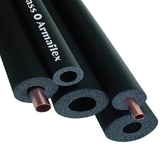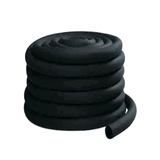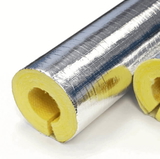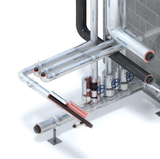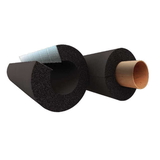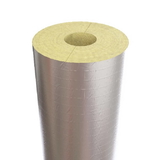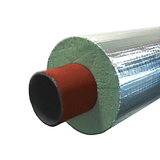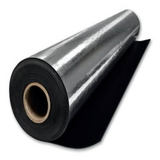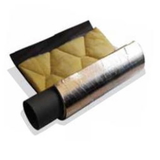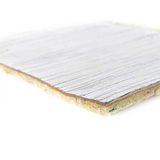- Blogs
- Types of Pipe Insulation: 6 Essential Solutions for Energy Efficiency
Types of Pipe Insulation: 6 Essential Solutions for Energy Efficiency

Pipe insulation is a vital component of any piping system, whether it is used for hot or cold water, steam, refrigeration, air conditioning, or heating. Pipe insulation can provide many benefits, such as reducing heat loss or gain, preventing condensation, protecting pipes from freezing, enhancing fire safety, and minimizing noise.
However, not all types of pipe insulation are suitable for every application. Different types of pipe insulation have different characteristics, such as thermal conductivity, moisture resistance, flexibility, durability, and cost. Therefore, it is important to choose the right type of pipe insulation for your specific needs and preferences.
In this article, we will introduce you to six essential types of pipe insulation that can help you achieve energy efficiency and comfort in your home or business. We will also explain the advantages and disadvantages of each type of pipe insulation, as well as some tips on how to install and maintain them properly.
By the end of this article, you will have a better understanding of the types of pipe insulation available in the market and how to select the best one for your project.
Fiberglass Pipe Insulation
Fiberglass is one of the most common types of pipe insulation. It is made from fine strands of glass that are spun into a wool-like material and bonded with a resin.
Fiberglass pipe insulation can be found in various forms, such as rigid boards, flexible blankets, preformed sections, or loose fill. Fiberglass pipe insulation is typically used for hot-water pipes, steam pipes, HVAC ducts, and refrigeration lines.
Some of the advantages of fibreglass pipe insulation are:
- It has a low thermal conductivity, which means it can effectively reduce heat loss or gain from pipes.
- It is non-combustible and fire-resistant, which means it can enhance the safety of your piping system.
- It is resistant to mould and mildew growth, which means it can prevent moisture problems and health hazards.
- It is easy to cut and fit around pipes and fittings, which means it can be installed quickly and efficiently.
Some of the disadvantages of fibreglass pipe insulation are:
- It can irritate the skin, eyes, and respiratory system when handled or cut, which means it requires proper protective equipment and ventilation during installation.
- It can absorb water and lose its insulating properties when exposed to moisture or humidity, which means it requires a vapour barrier or jacketing to prevent condensation.
- It can deteriorate over time due to mechanical damage or UV exposure, which means it requires regular inspection and replacement.
Here is an example of Fibreglass Pipe Insulation you can find on our website:
Isover Climpipe Fibreglass Pipe Insulation
 Isover Climpipe Fibreglass Pipe Insulation stands as a versatile and highly efficient solution for thermal and acoustic pipe insulation needs. Renowned for its swift and cost-effective installation, it offers the advantages of being lightweight and easily snap-fitted onto pipes, reducing labour expenses.
Isover Climpipe Fibreglass Pipe Insulation stands as a versatile and highly efficient solution for thermal and acoustic pipe insulation needs. Renowned for its swift and cost-effective installation, it offers the advantages of being lightweight and easily snap-fitted onto pipes, reducing labour expenses.
With a robust design featuring an aluminium face for fire resistance and excellent thermal and acoustic insulation properties, it ensures energy savings and noise reduction.
Furthermore, its eco-friendly construction, composed of up to 70% recycled glass, underscores its commitment to sustainability. Whether for internal or external pipework insulation, this product excels, making it a compelling choice for a wide range of applications, from residential to commercial, while consistently meeting high standards of performance and environmental responsibility.
Foam Pipe Insulation
Foam is another popular type of pipe insulation. It is made from synthetic materials that are expanded into a cellular structure with tiny air pockets. Foam pipe insulation can be found in various forms, such as rigid boards, flexible tubes, preformed sections, or spray foam. Foam pipe insulation is typically used for cold water pipes, refrigeration lines, air conditioning ducts, and heating pipes.
Some of the advantages of foam pipe insulation are:
- It has a low thermal conductivity, which means it can effectively reduce heat loss or gain from pipes.
- It has a high moisture resistance, which means it can prevent condensation and water damage on pipes.
- It has high flexibility, which means it can conform to any shape and size of pipes and fittings.
- It has a low cost, which means it can provide an economical solution for your piping system.
Some of the disadvantages of foam pipe insulation are:
- It can be flammable and emit toxic gases when exposed to fire or high temperatures, which means it requires a fireproof coating or jacketing to enhance its safety.
- It can be damaged by rodents or insects that may chew or burrow through it, which means it requires a protective covering or mesh to prevent pest infestation.
- It can degrade over time due to chemical reactions or UV exposure, which means it requires regular inspection and replacement.
Here are a few examples of Foam Pipe Insulation you can find on our website:
Climaflex Pipe Insulation
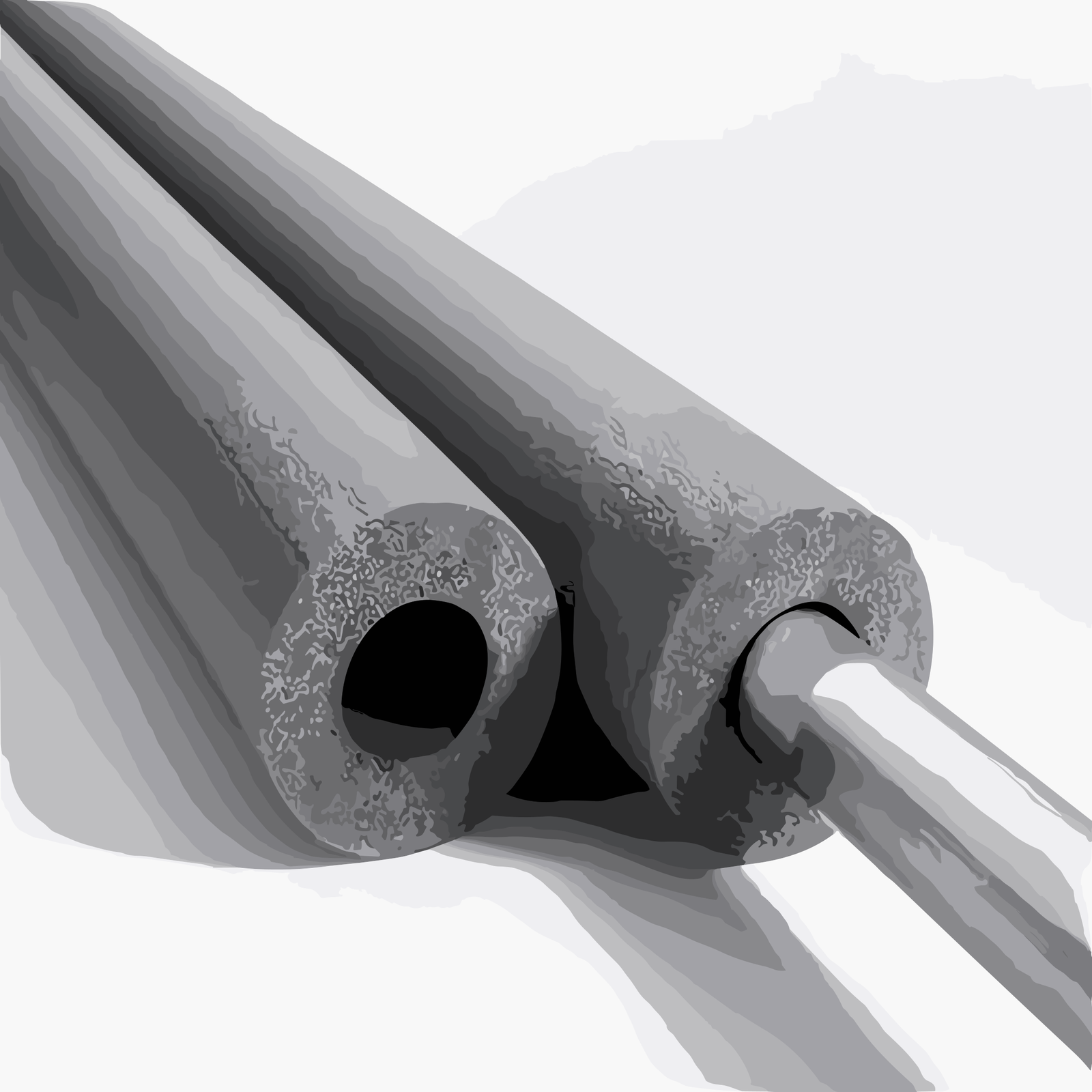 Climaflex Pipe Insulation represents a prime example of foam pipe insulation at its finest. Crafted from top-grade polyethylene foam, this insulation product comes in 1-meter lengths with a range of thickness options.
Climaflex Pipe Insulation represents a prime example of foam pipe insulation at its finest. Crafted from top-grade polyethylene foam, this insulation product comes in 1-meter lengths with a range of thickness options.
Its foam composition offers exceptional thermal conductivity, effectively reducing heat loss, while simultaneously providing sound-dampening properties to minimize noises within the pipes.
With moisture-resistant characteristics, it's a versatile choice for insulating a variety of piping systems, including central heating, and ensuring pipes in loft spaces remain frost-free.
Whether you're working on a domestic or commercial plumbing project, this foam insulation stands out for its efficiency, user-friendly installation, and eco-friendly credentials, making it the ultimate choice for superior foam insulation needs.
Armacell Tubolit Polyethylene Foam Pipe Insulation
 Armacell Tubolit Polyethylene Foam Pipe Insulation is a highly regarded and versatile solution for insulating pipes.
Armacell Tubolit Polyethylene Foam Pipe Insulation is a highly regarded and versatile solution for insulating pipes.
This foam pipe insulation product offers exceptional benefits, including low thermal conductivity, effectively retaining heat and preventing freezing. Crafted from top-quality polyethylene, it resists moisture and condensation, making it suitable for various applications, including indoor heating, plumbing, and even outdoor usage as a temporary fix.
Additionally, it provides acoustic insulation, reducing noise from fluid movement within pipes. Environmentally conscious consumers will appreciate its sustainability, as it's free from harmful substances like CFCs and HCFCs.
With a range of product diameters and thicknesses, Armacell Tubolit offers cost-effective, easy-to-install, and environmentally friendly foam pipe insulation, making it an ideal choice for efficient pipe insulation needs.
Mineral Wool Pipe Insulation
Mineral wool is another type of pipe insulation that is similar to fibreglass. It is made from natural or synthetic minerals that are melted and spun into fine fibres. Mineral wool pipe insulation can be found in various forms, such as rigid boards, flexible blankets, preformed sections, or loose fill. Mineral wool pipe insulation is typically used for hot water pipes, steam pipes, HVAC ducts, and refrigeration lines.
Some of the advantages of mineral wool pipe insulation are:
- It has a low thermal conductivity, which means it can effectively reduce heat loss or gain from pipes.
- It is non-combustible and fire-resistant, which means it can enhance the safety of your piping system.
- It is resistant to mould and mildew growth, which means it can prevent moisture problems and health hazards.
- It has a high sound absorption, which means it can reduce noise and vibration from pipes.
Some of the disadvantages of mineral wool pipe insulation are:
- It can irritate the skin, eyes, and respiratory system when handled or cut, which means it requires proper protective equipment and ventilation during installation.
- It can absorb water and lose its insulating properties when exposed to moisture or humidity, which means it requires a vapour barrier or jacketing to prevent condensation.
- It can be heavy and bulky, which means it requires more space and support for your piping system.
Here are a few examples of Mineral Wool Pipe Insulation you can find on our website:
Rockwool Pipe Insulation - Aluminium Foil Faced Pipe Lagging
 Rockwool Pipe Insulation, a prime example of mineral wool pipe Insulation, offers an exceptional solution for effectively insulating heating, ventilation, and air conditioning pipework. Comprised of molten rock fibers spun together, this foil-faced pipe lagging comes in 1-meter lengths with various thicknesses and sizes.
Rockwool Pipe Insulation, a prime example of mineral wool pipe Insulation, offers an exceptional solution for effectively insulating heating, ventilation, and air conditioning pipework. Comprised of molten rock fibers spun together, this foil-faced pipe lagging comes in 1-meter lengths with various thicknesses and sizes.
Notably, it stands out for its superior fire resistance, sound insulation properties, and impressive thermal performance, with the ability to withstand temperatures as high as 250°C.
Its low K-value of 0.033 W/mK ensures energy and cost savings, while the factory-applied foil facing acts as a vapor barrier, protecting pipes from moisture and related issues.
Moreover, its self-adhesive lap allows for quick and straightforward installation, making it ideal for both DIY projects and professional applications.
Additionally, this environmentally friendly product is almost 97% recyclable, sourced sustainably, and free from ODP or Global Warming Potential, reflecting its commitment to eco-friendliness and long-lasting performance in various conditions and environments.
Knauf Pipe Insulation Thermo-Tek PS Eco Alu - Mineral Wool Pipe Lagging - Box Quantities
 Knauf Insulation Thermo-Tek PS Eco Alu, a cutting-edge mineral wool pipe insulation solution designed to elevate your thermal efficiency needs.
Knauf Insulation Thermo-Tek PS Eco Alu, a cutting-edge mineral wool pipe insulation solution designed to elevate your thermal efficiency needs.
Crafted with a focus on sustainability and technological innovation, this product offers circular wound mineral wool pipe sections for optimal thermal conductivity, ensuring energy savings.
Its hassle-free installation, thanks to self-adhesive closures and precision-engineered dimensions, reduces installation time significantly.
Moreover, the reinforced aluminium foil not only enhances strength but acts as a vapor barrier, preventing moisture buildup. Knauf's commitment to eco-friendliness is evident with its formaldehyde-free composition and utilization of bio-based materials in the binder.
Ideal for a wide range of applications, this mineral wool pipe insulation is a standout choice for residential, commercial, and industrial heating systems, as well as HVAC and plumbing applications, ensuring superior thermal insulation without the need for additional cladding.
Rubber Pipe Insulation
Rubber is another type of pipe insulation that is similar to foam. It is made from natural or synthetic rubber that is expanded into a cellular structure with tiny air pockets. Rubber pipe insulation can be found in various forms, such as flexible tubes, preformed sections, or self-sealing tapes. Rubber pipe insulation is typically used for cold water pipes, refrigeration lines, air conditioning ducts, and heating pipes.
Some of the advantages of rubber pipe insulation are:
- It has a low thermal conductivity, which means it can effectively reduce heat loss or gain from pipes.
- It has a high moisture resistance, which means it can prevent condensation and water damage on pipes.
- It has high flexibility, which means it can conform to any shape and size of pipes and fittings.
- It has a high durability, which means it can withstand mechanical stress and environmental factors.
Some of the disadvantages of rubber pipe insulation are:
- It can be flammable and emit toxic gases when exposed to fire or high temperatures, which means it requires a fireproof coating or jacketing to enhance its safety.
- It can be affected by oils, solvents, or acids that may corrode or dissolve it, which means it requires a chemical-resistant covering or coating to protect it.
- It can be expensive, which means it may not be the most cost-effective solution for your piping system.
Here are a few examples of Rubber Pipe Insulation you can find on our website:
Armaflex Pipe Insulation - Nitrile Rubber- Black Pipe Lagging
 Armaflex Pipe Insulation is a high-quality rubber pipe insulation solution designed for a wide range of HVAC and plumbing applications. Crafted from durable nitrile rubber, this black foam tubing is not only flexible and easy to install but also offers excellent thermal performance, effectively reducing heat loss and keeping hot water hot.
Armaflex Pipe Insulation is a high-quality rubber pipe insulation solution designed for a wide range of HVAC and plumbing applications. Crafted from durable nitrile rubber, this black foam tubing is not only flexible and easy to install but also offers excellent thermal performance, effectively reducing heat loss and keeping hot water hot.
It serves as an ideal choice for insulating heating and cooling pipes, with a service temperature ranging from -50°C to +110°C.
Furthermore, this product features a built-in vapour barrier to prevent condensation and corrosion, Class O compliance with building regulations, and Microban antimicrobial protection, which inhibits bacterial growth in pipework.
Armaflex Pipe Insulation is the go-to choice for ensuring energy efficiency and longevity in your pipe systems, making it a top-notch example of rubber pipe insulation.
K Flex Pipe Insulation - Nitrile Rubber - Armaflex Lagging Alternative
 K Flex Pipe Insulation, crafted from nitrile rubber, offers a cost-effective and energy-efficient solution for insulating pipes. With various insulation thickness options and a wide range of pipe diameters, it is ideal for residential, commercial, and industrial applications, as well as HVAC and plumbing systems.
K Flex Pipe Insulation, crafted from nitrile rubber, offers a cost-effective and energy-efficient solution for insulating pipes. With various insulation thickness options and a wide range of pipe diameters, it is ideal for residential, commercial, and industrial applications, as well as HVAC and plumbing systems.
What sets it apart is the convenience of self-adhesive strips for easy installation, making it accessible for DIY enthusiasts. This closed-cell rubber insulation not only minimizes heat loss or gain but also serves as a reliable moisture barrier, guarding against corrosion, condensation, and freezing. Moreover, K Flex's inherent resistance to microbial growth and mold makes it a durable choice for enhancing the longevity and performance of pipework. Light, flexible, and available in 2-meter lengths, K Flex Pipe Insulation is a versatile and efficient solution for a wide range of pipe insulation needs, effectively proving itself as a prime example of rubber pipe insulation.
Phenolic Pipe Insulation
Phenolic pipe insulation is a type of pipe insulation that is similar to foam. It is made from phenol-formaldehyde resin that is expanded into a closed-cell structure with tiny air pockets. Phenolic pipe insulation can be found in various forms, such as rigid boards, flexible tubes, preformed sections, or self-sealing tapes. Phenolic pipe insulation is typically used for cold water pipes, refrigeration lines, air conditioning ducts, and heating pipes.
Some of the advantages of phenolic pipe insulation are:
- It has a very low thermal conductivity, which means it can effectively reduce heat loss or gain from pipes.
- It has a very high fire resistance, which means it can meet the 25/50 flame spread/smoke developed code requirements for use within commercial building return air plenums.
- It has a very high moisture resistance, which means it can prevent condensation and water damage on pipes.
- It has a very high compressive strength, which means it can withstand mechanical stress and environmental factors.
Some of the disadvantages of phenolic pipe insulation are:
- It can emit toxic gases when exposed to fire or high temperatures, which means it requires proper ventilation during installation and operation.
- It can be affected by oils, solvents, or acids that may corrode or dissolve it, which means it requires a chemical-resistant covering or coating to protect it.
- It can be expensive, which means it may not be the most cost-effective solution for your piping system.
Here are a few examples of Phenolic Pipe Insulation you can find on our website:
Kingspan Pipe Insulation - Kooltherm Phenolic Pipe Insulation
 Kingspan Pipe Insulation, specifically the Kooltherm Phenolic Pipe Insulation, stands out as a top-tier choice for thermal insulation needs, excelling in efficiency, fire resistance, and cost-effectiveness.
Kingspan Pipe Insulation, specifically the Kooltherm Phenolic Pipe Insulation, stands out as a top-tier choice for thermal insulation needs, excelling in efficiency, fire resistance, and cost-effectiveness.
With an exceptional thermal conductivity of just 0.025 W/m·K, it outperforms many other insulation materials, allowing for thinner insulation thicknesses and space-saving benefits. Its impressive fire resistance and moisture resistance properties make it a reliable option for safeguarding pipes against adverse conditions.
Moreover, it's an environmentally responsible choice with its CFC/HCFC-free composition and high BRE Green Guide rating, ensuring long-lasting energy savings. Kingspan's Kooltherm Phenolic Pipe Insulation is versatile, and suitable for various pipework types and applications, making it a smart and sustainable solution for thermal insulation needs.
Phenolic Foam Pipe Insulation By Supaphen - Box Quantities
 Supaphen Foam Pipe Insulation, a top-tier phenolic thermal lagging solution designed to elevate the thermal efficiency of pipes within industrial and commercial settings. Crafted from high-quality phenolic foam with a remarkable thermal conductivity rating of 0.025 W/m·k, Supaphen complies with European Standard EN14314, ensuring unparalleled insulation capabilities for both hot and cold pipes in HVAC systems.
Supaphen Foam Pipe Insulation, a top-tier phenolic thermal lagging solution designed to elevate the thermal efficiency of pipes within industrial and commercial settings. Crafted from high-quality phenolic foam with a remarkable thermal conductivity rating of 0.025 W/m·k, Supaphen complies with European Standard EN14314, ensuring unparalleled insulation capabilities for both hot and cold pipes in HVAC systems.
These 1M-length pipe sections come equipped with a factory-applied aluminum foil vapor barrier for moisture protection, offering long-lasting performance. What sets Supaphen apart is its exceptional fire safety with a BL-s1, d0 classification and minimal smoke emission, making it ideal for various applications, including HVAC, refrigeration, and process piping.
This user-friendly solution's pre-formed sections ensure straightforward installation and compatibility with different pipe sizes and supports, making it a standout choice in the world of Phenolic Pipe Insulation.
Polyisocyanurate Pipe Insulation
Polyisocyanurate (PIR) is a type of pipe insulation that is similar to foam. It is made from polyurethane (PUR) that is modified with isocyanate to improve its thermal and fire performance. PIR pipe insulation can be found in various forms, such as rigid boards, flexible tubes, preformed sections, or spray foam. PIR pipe insulation is typically used for hot water pipes, steam pipes, HVAC ducts, and refrigeration lines.
Some of the advantages of PIR pipe insulation are:
- It has a very low thermal conductivity, which means it can effectively reduce heat loss or gain from pipes.
- It has a very high fire resistance, which means it can withstand high temperatures and flames without melting or burning.
- It has a very high moisture resistance, which means it can prevent condensation and water damage on pipes.
- It has a very high compressive strength, which means it can support heavy loads and resist deformation.
Some of the disadvantages of PIR pipe insulation are:
- It can be expensive, which means it may not be the most cost-effective solution for your piping system.
- It can be difficult to cut and fit around pipes and fittings, which means it requires special tools and skills for installation.
- It can degrade over time due to UV exposure or chemical reactions, which means it requires regular inspection and replacement.
Frequently Asked Questions
Q: What are the different types of pipe insulation?
A: There are several types of pipe insulation available, including foam insulation, rubber insulation, fiberglass insulation, and rockwool insulation.
Q: What is the purpose of pipe insulation?
A: Pipe insulation is used to prevent heat loss or gain from hot and cold pipes, as well as to reduce condensation and prevent water damage.
Q: How does pipe insulation work?
A: Pipe insulation works by creating a barrier between the pipe and the surrounding environment. This barrier helps to maintain the temperature of the pipe and reduce energy loss.
Q: How thick should pipe insulation be?
A: The thickness of pipe insulation depends on factors such as the type of pipe, the temperature of the fluid being transported, and the desired level of insulation. It is recommended to consult insulation guidelines or professionals for the appropriate insulation thickness.
Q: What is the best insulation material for pipes?
A: The best insulation material for pipes depends on the specific requirements of the project. Common options include foam insulation, fiberglass insulation, and rubber insulation.
Q: Can pipe insulation be used on hot pipes?
A: Yes, pipe insulation can be used on hot pipes to prevent heat loss and increase energy efficiency.
Q: Can pipe insulation be used on cold water pipes?
A: Yes, pipe insulation can be used on cold water pipes to prevent condensation and reduce the risk of freezing.
Q: How do I select the right pipe insulation?
A: When selecting pipe insulation, consider factors such as the temperature range, pipe size, insulation thickness, and whether acoustic insulation is needed. It is also important to choose insulation material that is suitable for the specific application.
Q: How do I install pipe insulation?
A: Pipe insulation can be installed by cutting it to the desired length, wrapping it around the pipe, and securing it with adhesive or tape. It is important to ensure a snug fit and proper coverage of the pipe surface.
Conclusion
Pipe insulation is an essential component of any piping system that can help you achieve energy efficiency and comfort in your home or business. However, not all types of pipe insulation are suitable for every application. Therefore, you need to consider various factors, such as the temperature, moisture, fire, noise, durability, and cost of your piping system before choosing the best type of pipe insulation for your project.
In this article, we have introduced you to six essential types of pipe insulation that can provide different benefits and drawbacks for your piping system. These are fibreglass pipe insulation, foam pipe insulation, mineral wool pipe insulation, rubber pipe insulation, polyisocyanurate pipe insulation and phenolic pipe insulation, which is another type of foam insulation that has some unique characteristics.
We hope that this article has helped you gain a better understanding of the types of pipe insulation available in the market and how to select the best one for your project.
If you have any questions or comments about this article, please feel free to comment below. We would love to hear from you and help you with your pipe insulation needs.

Samuel Hitch
Managing Director
Buy Insulation Online.
Leave A Reply
Your feedback is greatly appreciated, please comment on our content below. Your email address will not be published. Required fields are marked *







